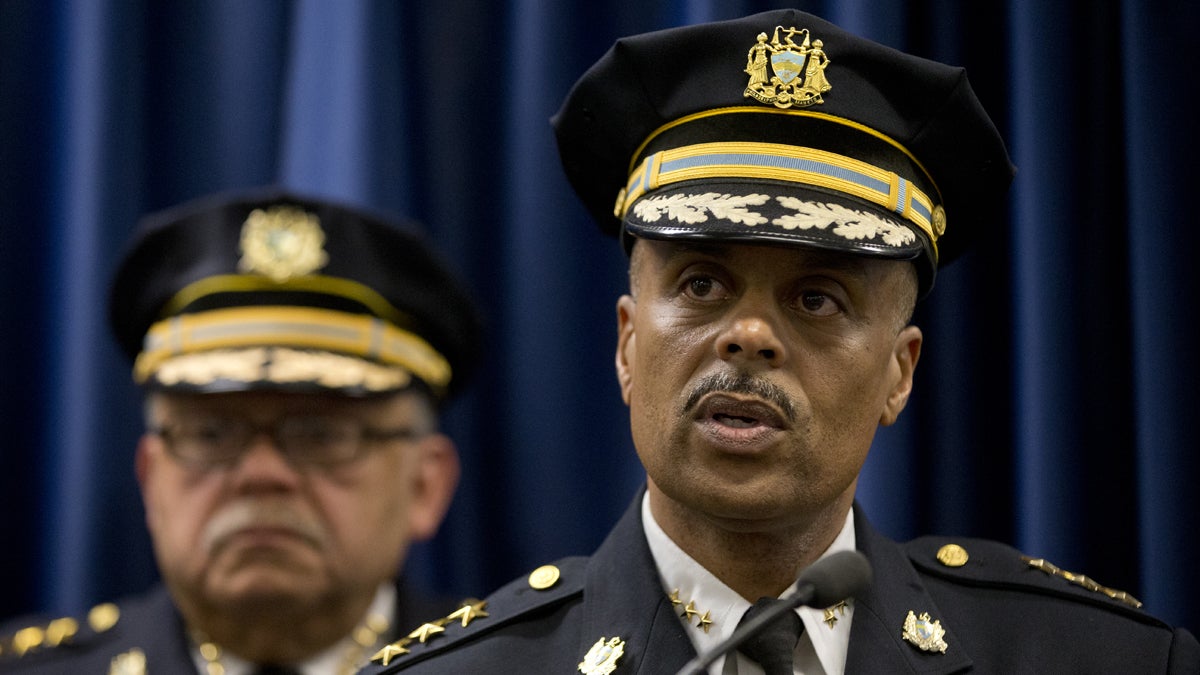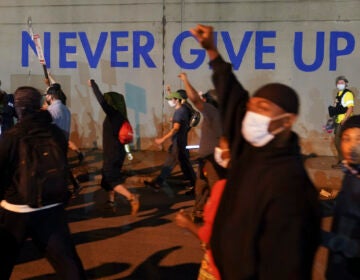‘Truth and reconciliation’ through police transparency in the Black Lives Matter era

In this 2015 photo
A remarkable series of transparency victories in policing has occurred in Chicago over the last year, victories that can inform the general public, police-reform advocates, attorneys, and journalists. This initial chipping away at the “Chicago Way” can serve as a way forward out of Philadelphia’s own “corrupt and contented” history, particularly in the realm of law enforcement.
Lighting the ‘Chicago way’
Thanks to a dogged Chicago investigative journalism nonprofit called the Invisible Institute, over 56,000 civilian complaints lodged against the Chicago Police Department were published in 2015. Once the Institute published the complaints and open data volunteers crunched the numbers, the public was able to learn just how infrequently repeat offender officers were disciplined, and how grievances filed by people of color were disproportionately dismissed compared to those filed by whites. The reports also seemed to confirm the supposition that a relatively small number of “repeat offender” officers within the department spurred the majority of complaints within the nation’s second largest police force and, in so doing, tarnished the reputation of the majority of officers who properly do their jobs.
The disclosures also documented systemic corruption and incompetence within the police department’s higher ranks and helped to shed light on institutional permission for officer brutality and other breaches of public trust.
“We thus find ourselves in Chicago in the early stages of something akin to a truth and reconciliation process,” wrote the Institute’s founder, Jamie Kalven, in a 2015 Chicago Tribune op-ed.
The Institute’s efforts have started in motion a new era of openness and some degree of accountability. After the release of the video of Laquan McDonald’s cold-blooded killing by officer Jason Van Dyke, it was revealed that Van Dyke had sustained over 18 complaints throughout his career, and that he was never disciplined, according to the data. This disclosure raised clearly important questions about why Van Dyke had never been punished. The disclosures also enabled journalists to provide more context in their reporting, helping to change often one-sided narratives around these incidents.
“It is clear that repeaters can not only be identified, but their misconduct can also be predicted,” FiveThirtyEight’s Rob Arthur wrote in an analysis of the release. It also posited that bad behavior could possibly be prevented.
Philly police vs. the Department of Justice
Enter Philadelphia. Our police department is currently in the process of reforming itself under the microscope of the Justice Department after a rash of officer-involved shootings drew federal scrutiny in 2014. The police department is required to complete reforms next year. It’s also struggling with a federal consent decree over its use of often dehumanizing and ineffectual “pedestrian stops,” also known as stop-and-frisk. Details on the latest review of PPD’s adherence to the stop-and-frisk decree is expected next month, according to a source familiar with the matter. Meanwhile, city council has failed to summon the political will to put before voters a ballot measure that would create a truly independent, and adequately funded, civilian review board. The bill has been sitting on a shelf, collecting dust, for two years.
And despite the latest DOJ report, in part, recommending an overhaul of the department’s Early Intervention System (EIS) — a tool in place since 1993 that’s used to identify and engage officers who are or who may become threats to the community — the DOJ’s blueprint for department reform does not actually require the police to fix their EIS.
Putting aside its current reform efforts (21 out of 91 DOJ recommendations have been completed, according to last year’s interim report, although the needle hasn’t moved much since then), our police department has a long, brutal history of scandals. The most recent police scandal, involving six narcotics officers indicted (and later acquitted) on federal corruption charges, led then-Commissioner Charles Ramsey to declare: “This is one of the worst cases of police corruption I have ever seen.” It was recently discovered that one of the acquitted officers, since promoted, is once again involved in drug cases. Another resigned after failing a drug test.
Despite repeated federal investigations, a seemingly endless amount of internal soul searching, promises, and “bad apple” analogies repeated ad nauseum, each decade continues to spew forth betrayals of public trust. Successive reform efforts seem to bring us right back to where we started.
Lack of transparency
And yet in 2016, we still have nothing even approaching a comprehensive picture of how uniformed public servants are behaving in the course of their duties, and no way to independently gauge the department’s efficacy in disciplining problem officers.
That’s because the department has seemingly ignored a Nutter-era executive order, established in 2012, that requires the agency to semi-annually publish “statistics … disclosing the number of complaints filed, the nature of the complaints, and their dispositions.” Nutter’s order also instructs Internal Affairs to provide public access to complaints, which the bureau does, but this system is not set up to give citizens a broad picture of alleged misconduct, and the information available is costly and time-consuming to request. The city has so far not yet crunched the data within those complaints and made them available to the public, as the order requires them to do.
And the icing on this rancid cake: The department’s inexplicable resistance to holding public hearings on forming the department’s body-worn camera policy, a move that one police-reform expert, who requested anonymity, says should be “a no-brainer.”
The department’s arrogance in this matter erodes community trust.
“Trust cannot manifest where secrecy, elitism, and a lack of accountability abounds,” local journalist and activist Christopher Norris rightly said after the police publicly pushed back against demands for hearings on the department’s body-worn camera policy.
Former mayor Nutter isn’t the only public official who believes the department should detail civilian complaints against law enforcement. The Pennsylvania Intergovernmental Cooperation Authority (PICA) this year called for the release of similar information, urging public agencies like the police to begin reporting statistics that better measure “both service levels and social outcomes,” and specifically called for the department to include, among other data, complaints against officers.
When asked about the PICA board’s recommendation that statistics on civilian complaints be released, the Kenney administration says it plans to do “a holistic review” of the chronically underfunded Police Advisory Commission, as well as the Police Community Oversight Board, which is tasked with implementing the Justice Department’s latest reform recommendations.
“We expect to have more to say about this issue and others by winter 2016,” Kenney spokesperson Lauren Hitt told NewsWorks.
Allowing the police department to police themselves has gone on for far too long, and the public’s access to records detailing alleged police misconduct is long overdue, as is the opportunity to gauge our police department in its handling of problem officers. Coming clean with how, and how often, it disciplines officers who are violating that trust should be paramount in its mission, and an important first step in rebuilding trust with the communities they serve.
—
Correction: A previous version of this article stated that the Philadelphia Police Department had completed 91 percent of the U.S. Department of Justice’s recommendations. The correct figure is 23 percent: 21 out of the 91 DOJ recommendations have been completed.
WHYY is your source for fact-based, in-depth journalism and information. As a nonprofit organization, we rely on financial support from readers like you. Please give today.




